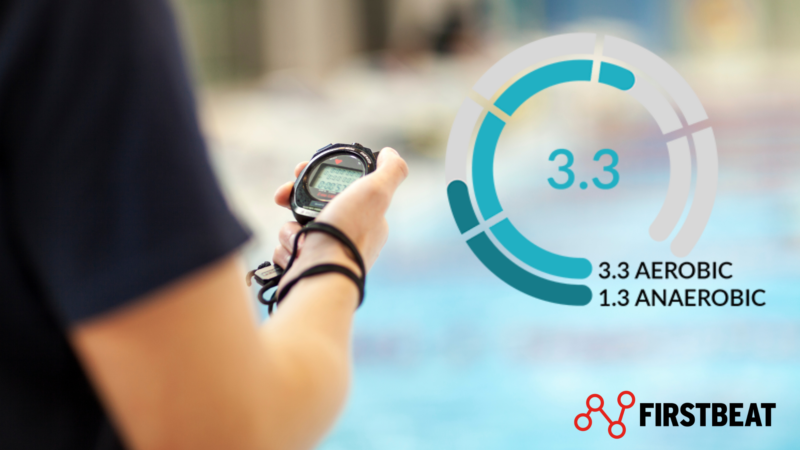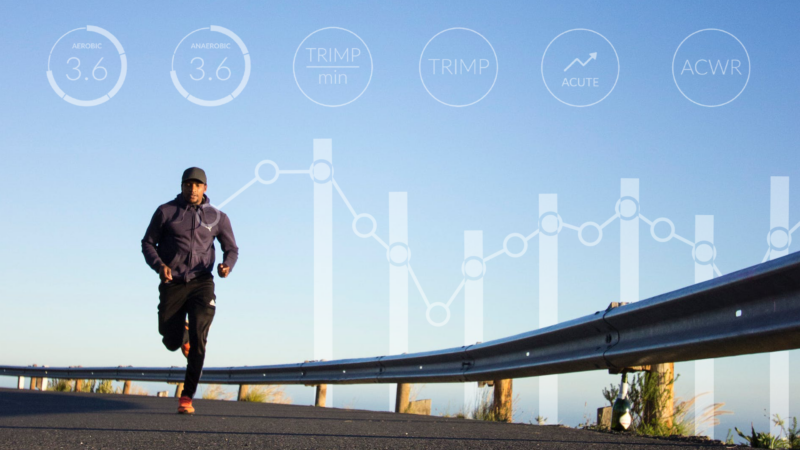
Selecting the right physiological monitoring tool can significantly impact how athletes train, recover, and perform. An effective system goes beyond basic data tracking, offering insights that empower teams to make informed, data-driven decisions. The challenge lies in identifying tools with features that truly enhance performance and well-being, rather than being distracted by unnecessary add-ons.
This article highlights the essential features to look for when evaluating physiological monitoring tools, helping you choose a solution that aligns with your goals and supports athlete success.
The Role of Athlete Monitoring in Modern Sports
Athlete monitoring has become a key element of modern sports management, and its evolution is closely tied to advancements in technology and data analytics. These tools have redefined how you assess performance, manage health, and optimize outcomes. By utilizing these innovations, you can make more precise, data-driven decisions that directly impact both short-term results and long-term success.
Understanding individual athlete responses is crucial, but making sense of complex physiological data can be daunting. Every athlete has a unique physiology and sports teams can’t perform at their best without optimizing each athlete’s physiological condition. This individuality can best be captured with data.
However, data is still used only to a fraction of its potential. Even the best teams use only 10% of the potential in physiological analytics. Applying physiological data in a team sports environment is very complex and demanding, but Firstbeat’s solution makes broader use of physiology possible and easy to interpret.

Teams that adopt Firstbeat to integrate an athlete’s physiological condition into their coaching strategy will inevitably achieve performance gains while minimizing injury risks.
Firstbeat makes interpreting physiological data easy to understand by turning metrics like training load and recovery into actionable insights. Specialized solutions like Firstbeat help coaches move beyond the raw numbers and focus on individual needs, making decisions with greater confidence.
With a streamlined approach to athlete monitoring, teams can ensure training loads are optimized, recovery is balanced, and readiness is prioritized—transforming data into real competitive advantages.
Injury prevention is another benefit offered by athlete monitoring tools. By identifying early warning signs—such as fatigue, imbalances, or abnormal physiological trends—you can address potential risks before they escalate.
Proactively managing these issues reduces the likelihood of injuries that could disrupt both an athlete’s career and the team’s overall performance.
Recovery management is equally important. Effective recovery not only prevents injuries but also improves long-term athletic health. Monitoring tools analyze key indicators, such as heart rate variability or muscle recovery, to help you determine whether an athlete is ready to return to full activity.
This ensures that recovery decisions are based on data instead of guesswork, leading to better outcomes and sustained performance over time.
Finally, the data-driven insights provided by these tools are transforming how teams develop performance strategies. By analyzing physiological trends and performance metrics, you can see patterns in the data that were previously hidden.
These insights help you make informed decisions, whether it’s adjusting tactics during a game or planning for game days during a competitive season. The result is a more strategic approach to maximizing performance and achieving goals.
Advancements in athlete monitoring can reshape how you train, protect, and lead your team to success.
Core Features to Look for in Athlete Monitoring Tools
1. A Systematic Monitoring System
In professional sports, where margins of success are razor-thin, a systematic monitoring system is a necessity, not a luxury. Teams need precise, real-time insights into both individual and collective performance to fine-tune training loads, optimize recovery, and enhance game-day readiness.
Physiological data forms the foundation of this system. Actionable metrics—such as Training Impulse (TRIMP), Excess Post-Exercise Oxygen Consumption (EPOC), and the Acute/Chronic Workload Ratio (ACWR)—offer a deeper understanding of workload and recovery. These metrics help performance staff adjust intensity levels in real-time while ensuring athletes remain within safe training thresholds.
Accuracy is non-negotiable. Small discrepancies in data can lead to overtraining, undertraining, or increased injury risks. A high-quality monitoring system must provide precise, validated physiological data to support data-driven decision-making. This is particularly crucial for team sports, where monitoring individual responses ensures that training programs align with both the athlete’s physiological state and the team’s tactical strategy.
Real-time monitoring capabilities (e.g., %HR Max, TRIMP/min) allow coaches to adjust training intensity instantly, ensuring sessions are neither too demanding nor too lenient. At the same time, long-term data trends offer insights into adaptation, workload sustainability, and recovery efficiency.
Finally, recovery tracking is an integral part of physiological monitoring. Insights into stress-recovery balance, sleep quality, and overnight HRV data provide a holistic view of athlete readiness, allowing for proactive load management rather than reactive injury response.
2. Appropriate Training Processes
An ideal athlete monitoring system goes beyond just tracking performance—it shapes data-driven training processes that maximize adaptation, reduce injury risk, and enhance tactical execution.
At the heart of this approach is the concept of workload balance, which is particularly relevant in team sports. Not all athletes experience the same level of physical stress; starters vs. non-starters, positional differences, and match schedules all create varying demands.
By leveraging Acute and Chronic Training Load metrics, coaches can scale training intensity appropriately, ensuring that players are prepared without being overworked.
Movement Load and Movement Intensity further refine training personalization. These metrics quantify the external and internal physiological demands of different training drills, helping teams fine-tune movement-based workloads to match tactical roles.
For instance, a forward in soccer or a wide receiver in football will have different movement profiles than a defender, requiring specific conditioning approaches.
To ensure training remains scientifically optimized, structured training session frameworks integrate HRV-based monitoring to assess pre-, mid-, and post-session responses. This helps coaches determine whether an athlete is improving, maintaining, or showing signs of strain. Session-to-session data trends also highlight fatigue accumulation, allowing for adjustments before performance declines or injuries occur.
Ultimately, training should not follow a one-size-fits-all approach. Individual session demands must align with an athlete’s physiological condition, position-specific needs, and readiness for upcoming matches. Data-backed personalization ensures each training session contributes to long-term performance goals while minimizing injury risks.
3. An Evidence-Based Practice Concept
Gone are the days when coaching relied purely on intuition. Today, data-driven training and recovery decisions are the standard in elite sports. Evidence-based athlete monitoring ensures that every adjustment, workload decision, and recovery protocol is informed by validated physiological insights rather than guesswork.
The core of evidence-based monitoring is the use of physiological metrics to fine-tune training intensity, workload progression, and recovery strategies. Metrics such as:
- Training Effect (aerobic and anaerobic): Determines how much a session contributes to cardiovascular and muscular adaptation.
- VO₂max estimation: Tracks aerobic fitness development over time.
- Recovery Status and Overnight HRV: Helps assess fatigue levels and readiness for training.
However, physiological monitoring is not just about performance—it is also about prevention. Injury prevention frameworks leverage historical data and workload trends to predict potential risks before they result in setbacks. Metrics like ACWR (Acute:Chronic Workload Ratio) help identify athletes who might be at risk of overuse injuries due to excessive load spikes.
Recovery monitoring tools, such as the Quick Recovery Test (QRT) and overnight stress-recovery balance tracking, are essential for preventing burnout. By consistently evaluating readiness levels, teams can adjust workloads dynamically, ensuring that athletes are pushed when ready and rested when necessary.
When injuries do occur, return-to-play (RTP) strategies must be data-backed rather than subjective. Evidence-based RTP frameworks ensure athletes meet physiological benchmarks before rejoining full training or competition. Using physiological insights, teams can determine when an athlete has fully recovered and is ready to handle competition intensity again.
The result? Fewer injuries, better load management, and optimal in-game performance. By embracing evidence-based decision-making, teams can maximize performance outcomes while safeguarding athlete health.
Conclusion
Choosing the right physiological monitoring tools isn’t just about tracking data, it’s about enabling smarter decisions, better athlete well-being, and sustained performance. These tools combine reliable metrics, advanced recovery insights, and real-time visibility into progress.
For decision-makers, the right system is an investment in outcomes: healthier athletes, optimized training, and a competitive edge.
Firstbeat enhances this process by delivering advanced physiological insights that empower smarter, science-backed decisions. From monitoring training loads and intensity to recovery efficiency, Firstbeat equips coaches and performance analysts with the tools they need to optimize athlete outcomes.
Book a demo with our experts to discover how Firstbeat can integrate into your team’s workflow and optimize performance with actionable data.
FAQ
What Are Physiological Monitoring Tools?
Physiological monitoring tools are systems or software designed to track and analyze athletes’ performance, health, and training metrics. These tools collect data on various physiological parameters such as heart rate, load, training effect and recovery, providing insights to optimize training and prevent injuries.
Why Are Physiological Monitoring Tools Important?
Physiological monitoring tools are important for optimizing athletic performance, tracking health metrics, and managing training effectively. They provide real-time insights into key indicators like session training load, recovery status, sleep, and external / internal load ratio= “efficiency” on team, positional and individual level. Enabling data-driven decisions to improve performance while reducing injury risks.
What Are The Basic Features Of A Physiological Monitoring Tool?
Physiological monitoring tools should offer real-time data tracking, accurate internal load analysis, and contextualization layers to monitor athletes’ performance, health, and training. Key features include heart rate monitoring, fatigue assessment, and recovery metrics on team, positional and individual level with the historical comparisons with similar sessions in the past (eg. MD-3). The system should integrate seamlessly with wearable devices, provide cloud-based data storage, and ensure data security. User-friendly interfaces, personalized alerts, and compatibility with team management software improve usability.
How Do I Choose The Right Physiological Monitoring Tool For My Needs?
To choose the right physiological monitoring tool, consider your specific needs, such as tracking performance, health, or recovery. Look for features like real-time data collection, data quality indicators and user-friendly interfaces. Prioritize tools with robust analytics, customizable reports, and data security. Lastly, evaluate customer support, cost, and user reviews to ensure the solution aligns with your requirements and improves athlete monitoring effectively.
You might also be interested in

Using Firstbeat Sports Training Effect During Return-to-Play
The Return-to-Play process, or indeed any conditioning program that is not in the form of the athlete’s sport, can be a challenge to manage. Questions such as how much should…

Firstbeat Heart Rate Sensors with Straps vs Heart Rate Sensors with Vests – What’s the Difference?
Heart rate data forms the basis of multiple performance metrics used in professional sports. These metrics support decision-making and facilitate effective athlete and team performance management. Key metrics that rely…

Gaining Athlete Buy-In – Ideas and Strategies for Successful Monitoring
The key to any successful monitoring strategy in sports is having buy-in from the athletes. Without athlete buy-in, it will likely be difficult to get reliable and valid data. Of…

